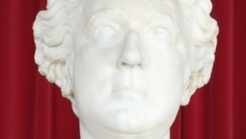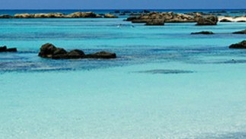

Greece
The exhibits of the Mycenae Archaeological Museum come from Mycenae and the spots that have been investigated in the surrounding areas and are accompanied by explanatory material, such as information, identification tabs of the exhibits, maps, drawings and recreations.
Construction for the Mycenae Archaeological Museum began in 1985. The building was completed in 1997. The choice for the location of the museum and the building ’s design, stemmed from the need to house the great amount of material of Mycenae, and at the same time to create an exhibition with a view to inform and teach, displaying in their natural habitat the consecutive usages of the place, and promote Mycenaean civilization.
The exhibits come from Mycenae and the spots that have been investigated in the surrounding areas, and represents the entire time span from the beginning of the Copper Era, around 3000BC to the Hellenistic times, during the 2nd century BC. It comprises of 2.500 exhibits, mostly clay, but also iron, stone, small scale works of art, gold, ivory and murals.
The exhibits are spread out in four distinct parts, structured based on theme and time. The first two are about the Copper Era, with themes such as the life of Mycenaeans and their afterlife, the third about the usage of the place during the Historic times, and the fourth about the Mycenaean civilization.
The exhibits are accompanied by explanatory material, such as information, identification tabs of the exhibits, maps, drawings and recreations.


The house he lived in, where he wrote and died, after being destroyed by the WWII bombardments, was later restructured and still exists to this day. In Solomos’s house, the Company of Corfu Studies founded the Centre for Solomos Studies, which operates as “Solomos Museum”.


Jazz with colours from Crete and the Middle EastTuesday of 24 July 2018 20:30 in Kipotheatro Mano Chatzidakis in Irakleios and Wednesday of 25 July in 8.30mm in the hospitable space of wine factory Manoysaki in Batolakko Chanias, Maria Manoysaki organises the 5th International Musical Festival Crete


A paradise on earth, with opalescent pink sand created by shards of shells and warm water. The entire area is protected by the NATURA program of the EU, as a region of utmost beauty.
1039 Ε 6061 01515 00